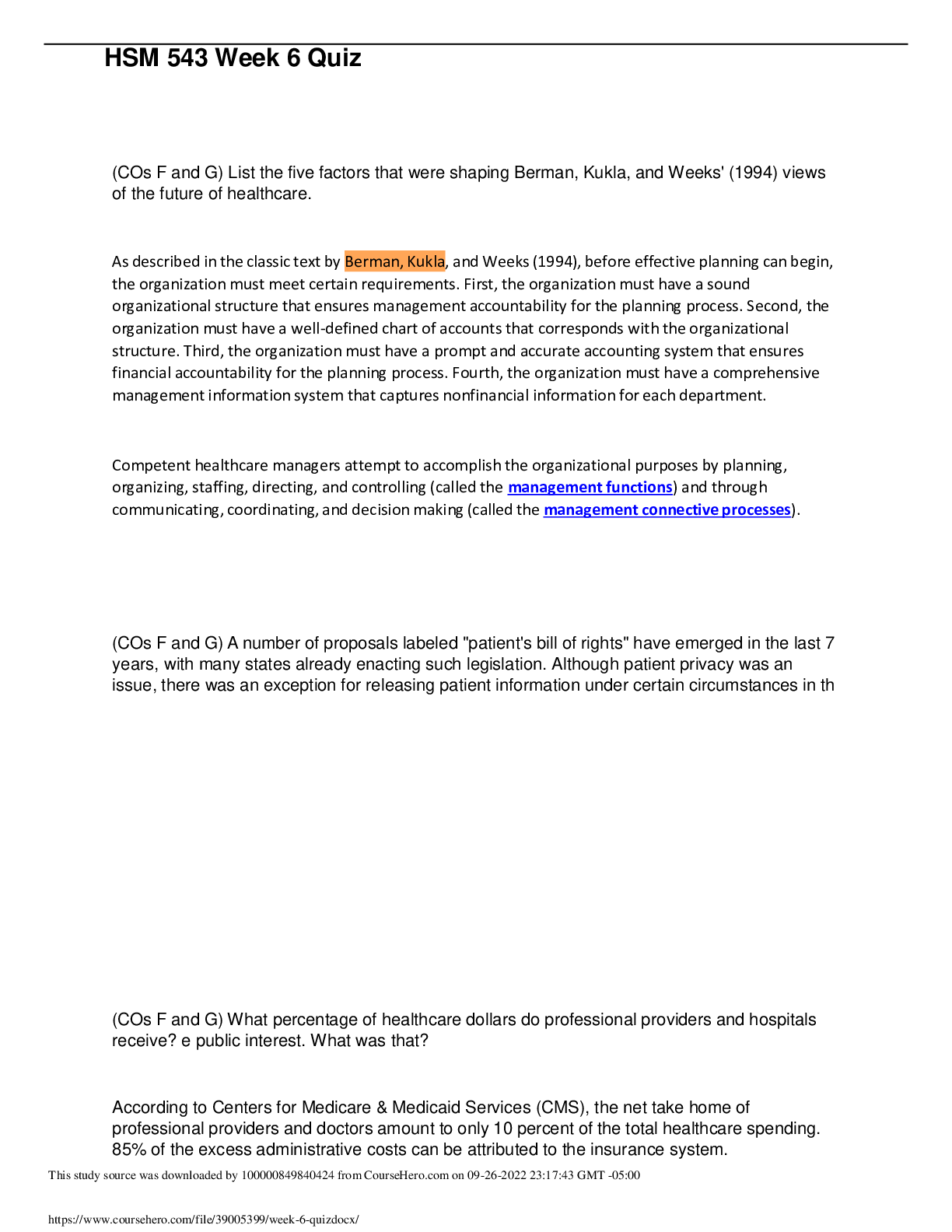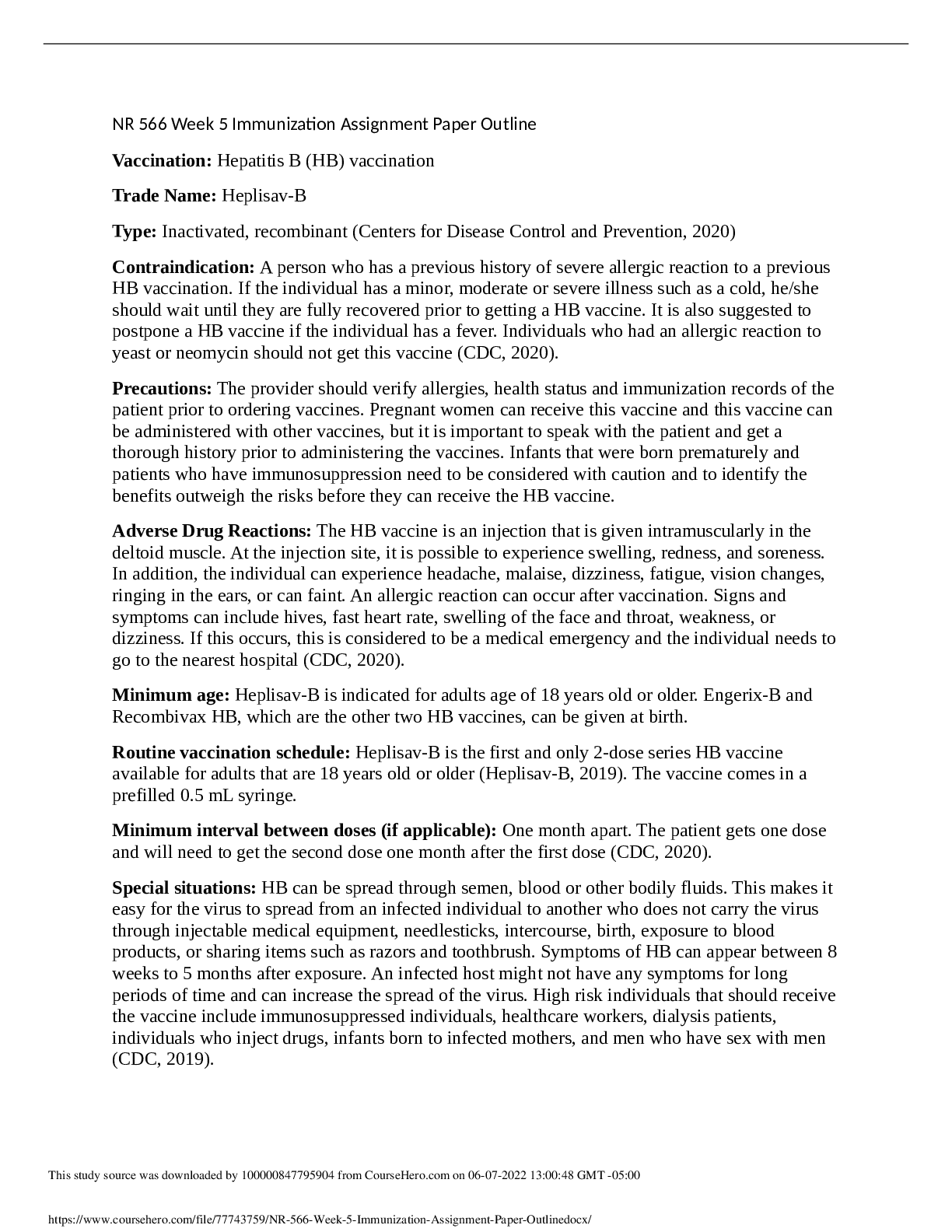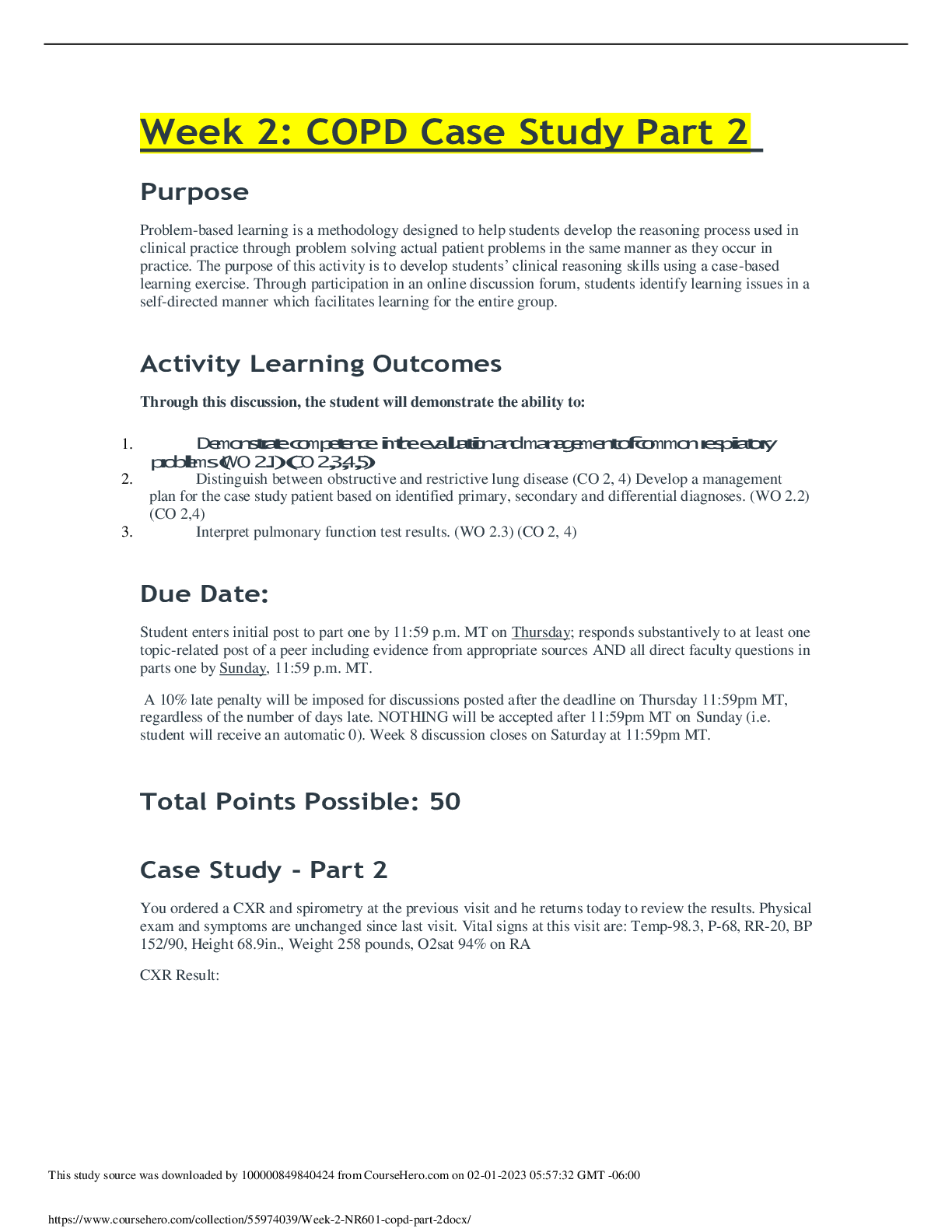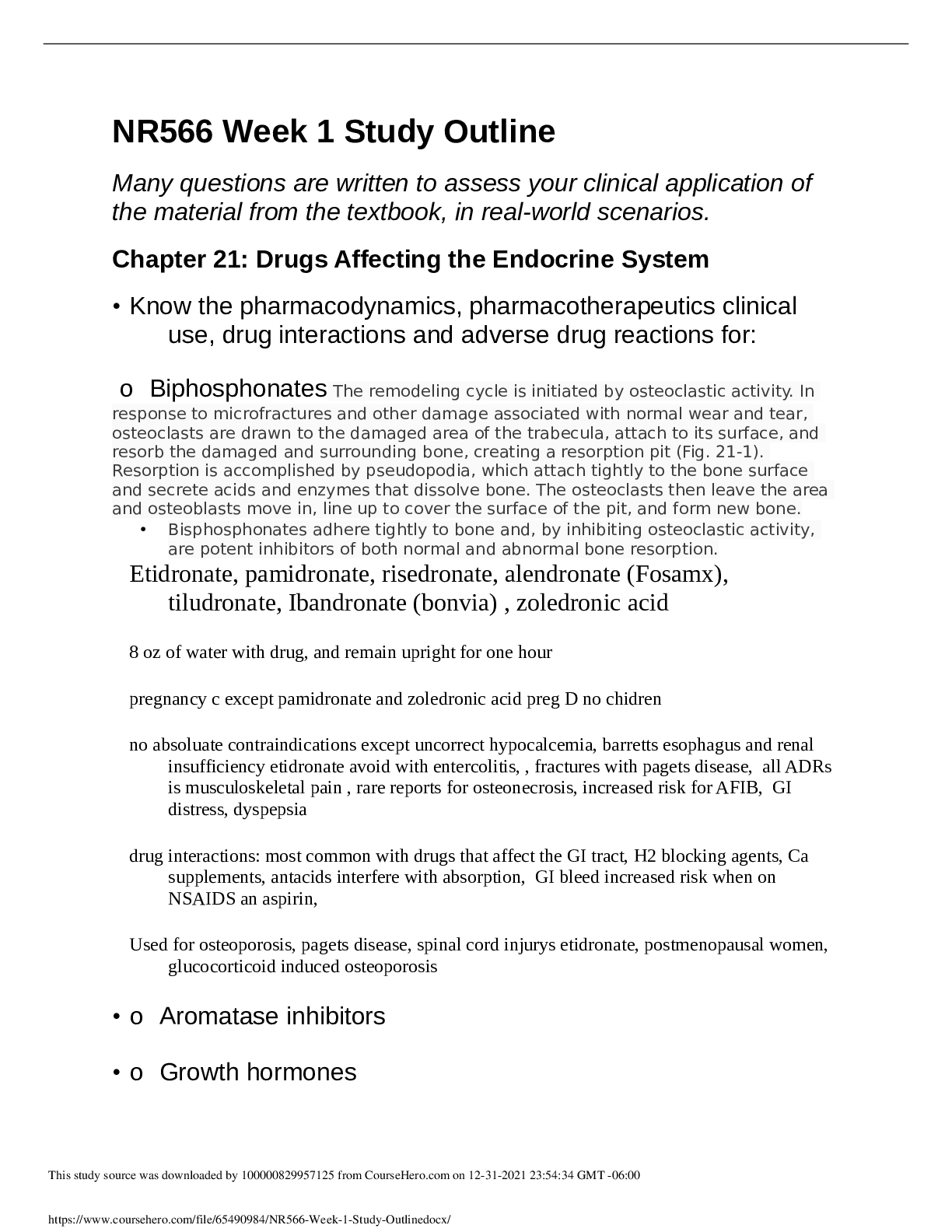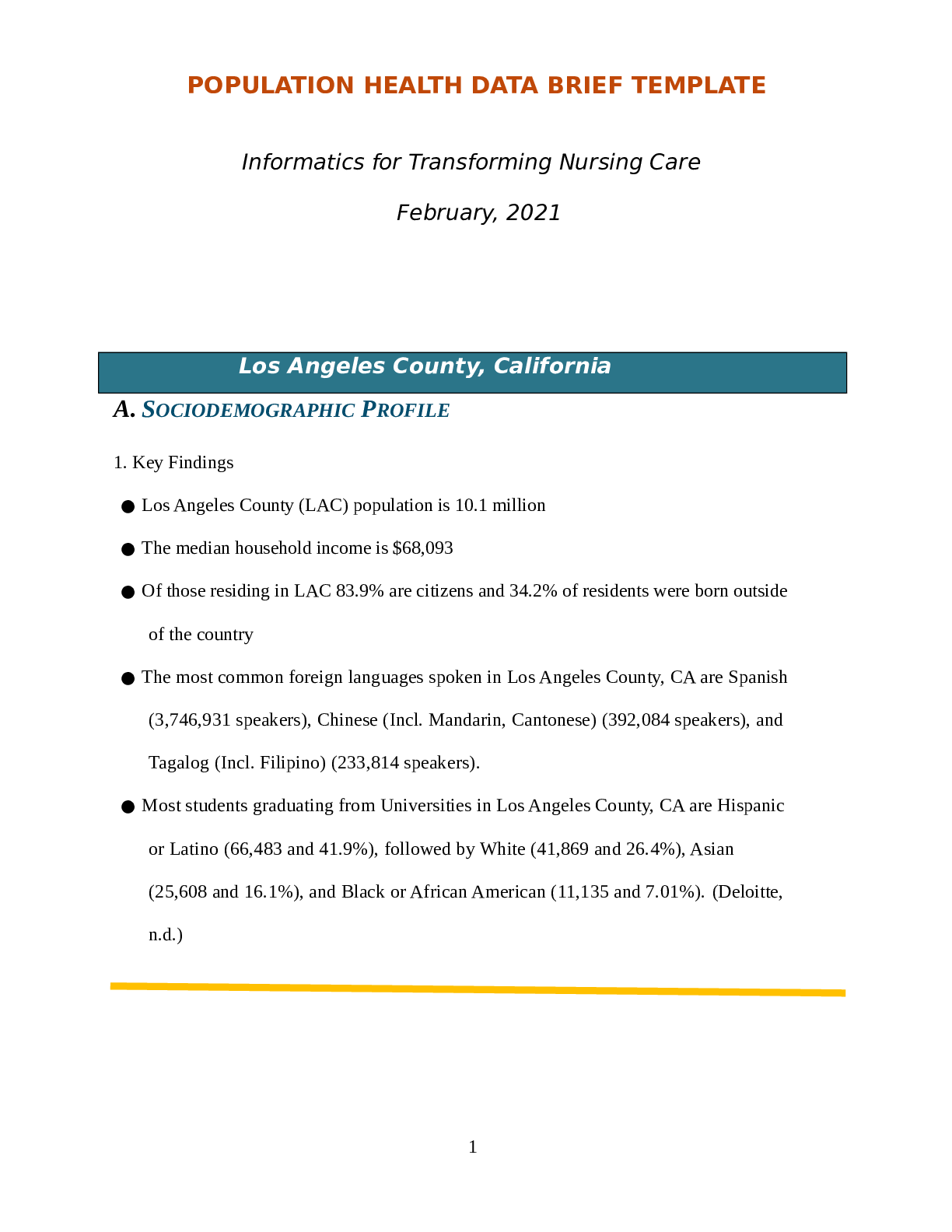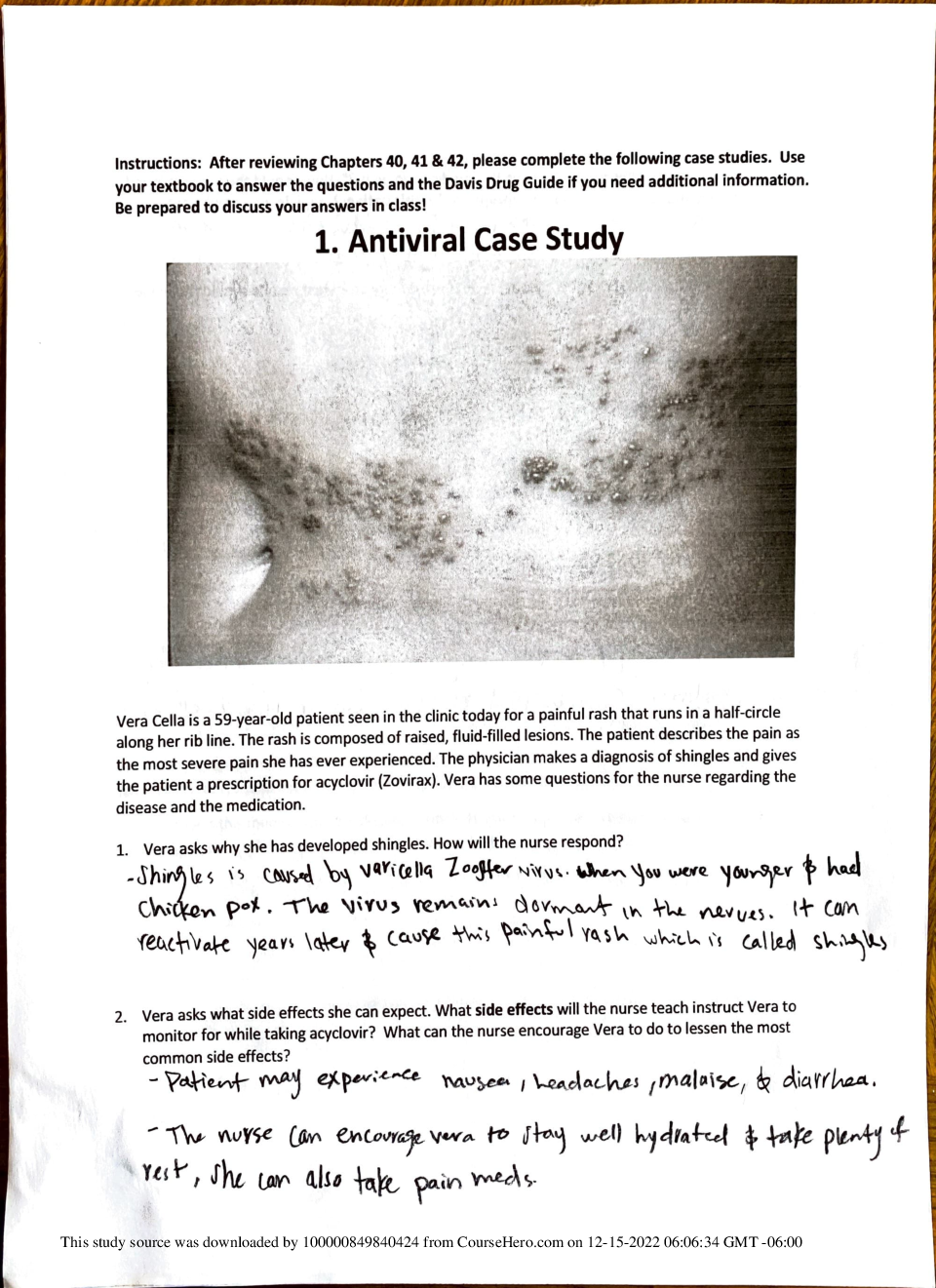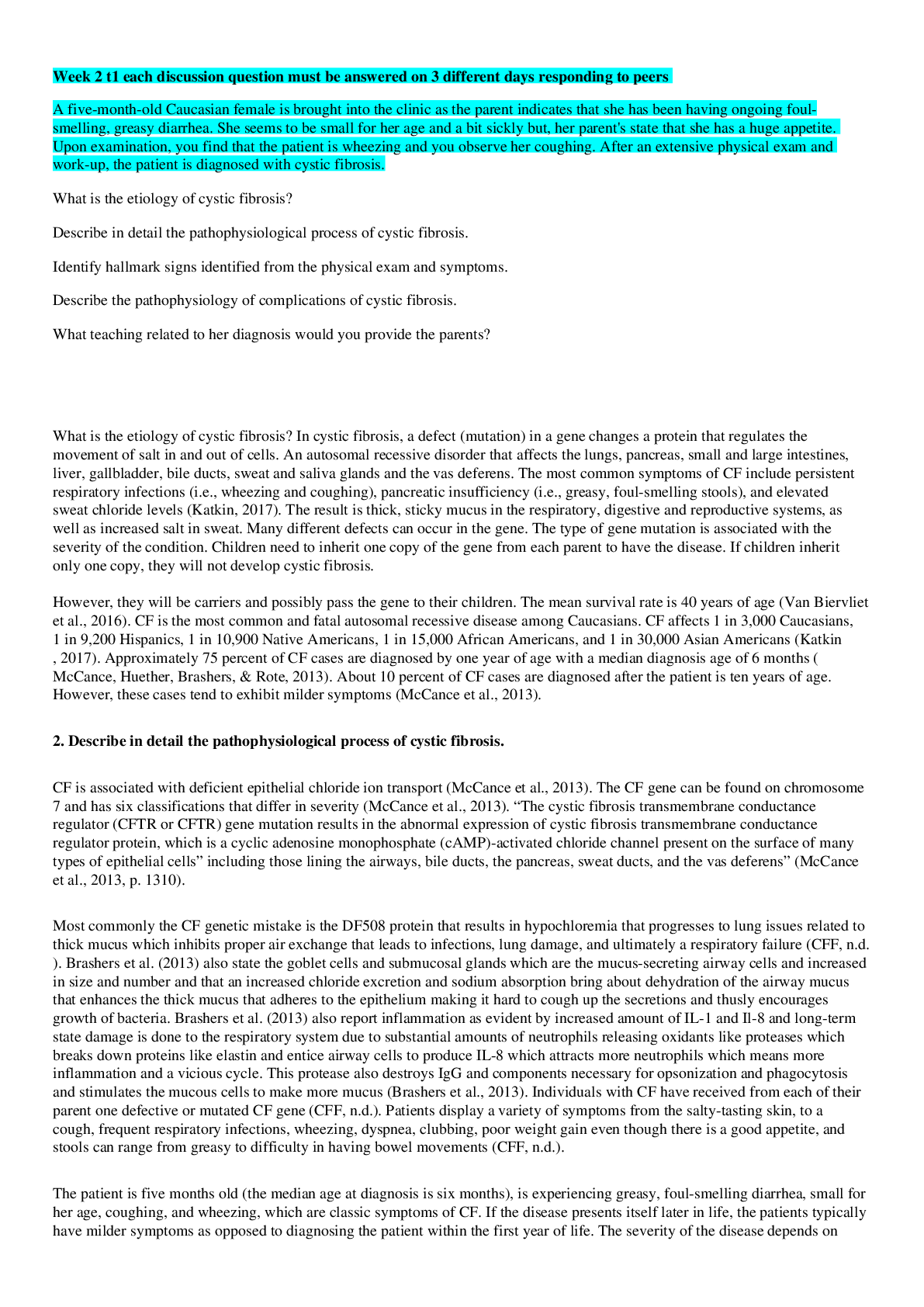*NURSING > CASE STUDY > BIOS 256 Week 2 Case Study: Lower GI | GRADED A | Chamberlain College of Nursing (All)
BIOS 256 Week 2 Case Study: Lower GI | GRADED A | Chamberlain College of Nursing
Document Content and Description Below
BIOS 256 Week 2 Case Study: Lower GI History: Mr. D is a 60-yr. old with fever, abdominal pain, decreased appetite, and nausea for the past 24 hrs. There are no new foods in his diet, and he has... not been travelling or eating out. He had a screening colonoscopy 5 years ago that showed diverticula in his colon, but he never had any problem with them. Physical: Mr. D appears tired and in pain. Exam is significant for abdominal tenderness to touch. Labs/Tests: White blood count is elevated on CBC Amylase, lipase and liver function tests are normal Abdominal CT scan shows diverticulitis Assessment/Plan: Diverticulitis- this occurs when diverticula (thin areas in the wall of the intestine that form "out pocketing") become inflamed. Risk factors include a low fiber diet and constipation. Treatment for diverticulitis includes avoiding solid foods, hydration, and antibiotics. Deliverables Answer the following questions and save your responses in a Microsoft Word document. Provide a scholarly resource in APA format to support your answers. 1. Provide a detailed description of the path of chyme, and later feces, from the duodenum to the anus, identifying the different portions of the small and large intestines. • The small intestine receives chyme from the stomach the chyme is mixed with secretions from the liver and pancreas and released into the duodenum. Segmentations mix the chyme with digestive juices and brings the food into contact with the mucosa for absorption, peristalsis propels chyme through small intestine into the jejunum. It has finger like structures called villi that assist with the absorption of the end products of digestion into the bloodstream, by this time chyme has reached the ileum and most of the digestion processes involving carbohydrate, protein and fats have occurred. It then releases hormones to generate the feeling of fullness. Undigested food is passed through the small intestine known as caecum. It is a small pouch that acts as a storage site. Slower peristalsis movements push undigested food remains along the colon; it then mixes freely with the resident bacterial population. The bacteria ferment some of the food remains, producing short-chain fatty acids as well other important chemicals such as vitamin K. The sigmoid colon in the large intestine then take the liquid from the small intestine and turns it into a semi-solid know as stool. The sigmoid colon then stores the stool until a mass movement empties it into the rectum. The rectum’s external opening, the anus, is controlled by a set of muscles. When filled by a mass movement from the sigmoid colon, the rectum is stretched and produces the desire to defecate 2. Describe 2 important functions of the small intestine. • Absorbs about 90% of Nutrients and water. • The lacteals (lymphatic capillaries) absorb chylomicrons in small intestine 3. Describe 2 important functions of the large intestine • Haustral churning, peristalsis, and mass peristalsis drive contents of colon into rectum • absorbs vitamins that are liberated by bacterial action 4. Diverticulitis most often affects the sigmoid colon. Based on your knowledge of its location in the abdomen in which of the following quadrants do you predict the location of pain to be? • Left lower quadrant 5. If diverticulitis worsens it can lead to life-threatening peritonitis. Describe 2 functions of the peritoneum. • Protects and holds the organs in place within the abdominal cavity. • acts as a conduit for the passage of nerves, blood vessels, and lymphatics [Show More]
Last updated: 1 year ago
Preview 1 out of 2 pages
Instant download

Buy this document to get the full access instantly
Instant Download Access after purchase
Add to cartInstant download
Reviews( 0 )
Document information
Connected school, study & course
About the document
Uploaded On
Aug 30, 2022
Number of pages
2
Written in
Additional information
This document has been written for:
Uploaded
Aug 30, 2022
Downloads
0
Views
70
